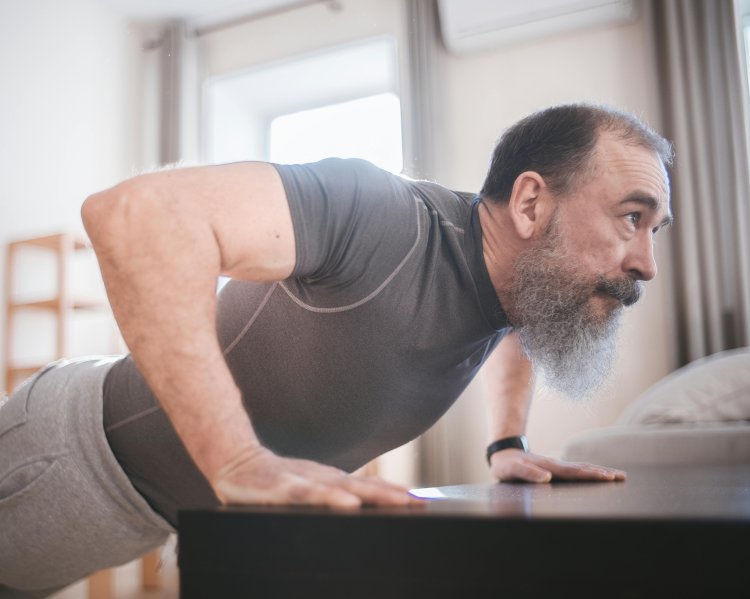10 Best Bodyweight Exercises for Beginners (Backed by Science)

Starting a fitness journey doesn’t require a gym membership or expensive equipment. Bodyweight exercises are a highly effective way for beginners to build strength, improve mobility, and enhance overall fitness — all from the comfort of home. Research supports their value for increasing muscle endurance, improving cardiovascular health, and even aiding in weight management.
This article breaks down the 10 best beginner-friendly bodyweight exercises, including benefits, technique tips, and scientific backing.
Why Bodyweight Exercises Work
Bodyweight training is a form of resistance training using your own body mass as resistance. Studies, including one published in the Journal of Exercise Rehabilitation, have shown that bodyweight exercises can significantly improve muscular strength and endurance (Lee et al., 2019). They also promote better joint stability, flexibility, and functional movement patterns — critical for long-term health and injury prevention.
Bodyweight workouts are adaptable, scalable, and accessible, making them ideal for beginners.
1. Bodyweight Squats
Muscles Worked: Quads, hamstrings, glutes, core
Why It’s Great: Squats train your lower body and core, improving mobility and stability.
How to Do It:
-
Stand with feet shoulder-width apart.
-
Lower your hips back and down as if sitting in a chair.
-
Keep your chest up and knees aligned over your toes.
-
Return to standing.
Beginner Tip: Use a chair behind you for guidance and support if needed.
2. Incline Push-Ups
Muscles Worked: Chest, shoulders, triceps, core
Why It’s Great: Push-ups build upper body strength and can be easily modified.
How to Do It:
-
Place hands on an elevated surface (like a bench or sturdy table).
-
Lower your chest toward the surface, keeping your body in a straight line.
-
Push back up to the start.
Scientific Insight: A 2019 study in JAMA Network Open found push-up capacity is strongly correlated with cardiovascular health.
3. Glute Bridges
Muscles Worked: Glutes, hamstrings, core
Why It’s Great: Perfect for activating and strengthening the posterior chain.
How to Do It:
-
Lie on your back with knees bent and feet flat.
-
Squeeze your glutes and lift your hips.
-
Hold briefly at the top, then lower down.
Bonus: Can help alleviate lower back pain by strengthening stabilizing muscles.
4. Bird-Dog
Muscles Worked: Core, glutes, lower back, shoulders
Why It’s Great: Improves balance and core stability with minimal joint stress.
How to Do It:
-
Start on all fours.
-
Extend one arm and the opposite leg simultaneously.
-
Hold for a few seconds, return, and repeat on the other side.
Research Backing: Studies from Spine journal show bird-dogs reduce spinal load and improve motor control.
5. Wall Sits
Muscles Worked: Quads, glutes, calves
Why It’s Great: Great isometric exercise to build endurance in the lower body.
How to Do It:
-
Slide down a wall until knees are at a 90-degree angle.
-
Keep back flat against the wall and hold the position.
Pro Tip: Start with 20–30 seconds and gradually increase.
6. Planks
Muscles Worked: Core, shoulders, glutes
Why It’s Great: Builds core strength, posture, and shoulder stability.
How to Do It:
-
Place forearms on the ground, elbows under shoulders.
-
Keep your body in a straight line from head to heels.
-
Hold the position without letting hips sag.
Scientific Note: According to a 2013 study in Journal of Strength and Conditioning Research, planks activate more core muscles than traditional crunches.
7. Step-Ups
Muscles Worked: Quads, glutes, hamstrings
Why It’s Great: Trains leg strength, balance, and coordination.
How to Do It:
-
Step up onto a sturdy platform or stair.
-
Push through your front heel to lift your body up.
-
Step down and repeat with the other leg.
Beginner Adjustment: Use a lower step and increase height gradually as you progress.
8. Modified Side Planks
Muscles Worked: Obliques, glutes, shoulders
Why It’s Great: Strengthens side core muscles, improving lateral stability.
How to Do It:
-
Lie on one side, knees bent.
-
Prop your upper body up on your forearm.
-
Lift hips off the ground to form a straight line from head to knees.
Variation Tip: Straighten the legs as strength improves.
9. Standing Calf Raises
Muscles Worked: Calves (gastrocnemius and soleus)
Why It’s Great: Simple but effective for ankle and lower leg strength.
How to Do It:
-
Stand with feet hip-width apart.
-
Raise your heels to stand on your toes.
-
Slowly lower back down.
Bonus: Improves ankle stability and can enhance running or walking performance.
10. Marching in Place
Muscles Worked: Legs, hips, core
Why It’s Great: A low-impact way to increase heart rate and promote mobility.
How to Do It:
-
Stand tall and lift one knee at a time to waist height.
-
Pump arms as if walking briskly.
-
Keep the pace brisk to increase cardio impact.
Ideal For: Warm-ups or active rest between strength sets.
Summary: Building a Strong Foundation Without Equipment
Bodyweight exercises are a powerful tool for beginners. They improve functional strength, balance, and endurance without putting excessive strain on the joints. Moreover, they’re supported by scientific research and recommended by fitness professionals for long-term health benefits.
Here’s a quick recap of the top 10 exercises:
-
Bodyweight Squats
-
Incline Push-Ups
-
Glute Bridges
-
Bird-Dog
-
Wall Sits
-
Planks
-
Step-Ups
-
Modified Side Planks
-
Standing Calf Raises
-
Marching in Place
These moves can be mixed into a full-body routine done 2–4 times per week. Start with 1–2 sets of each exercise for 10–15 reps (or 20–30 seconds for holds), gradually increasing as strength improves. Always focus on proper form before increasing volume or intensity.